Idyllically situated in the Los Glaciares National Park in Argentina’s Santa Cruz province, the village of El Chaltén is known as Argentina's trekking capital. It is a popular haven for outdoor enthusiasts with hiking opportunities abound for both advanced and beginner trekkers. Just an hour’s walk can lead you straight to the treasures of Los Glaciares National Park, which range from great glaciers to towering rocky summits and rolling forests. Founded in 1985, the town got its name from the Tehuelche word meaning ‘mountain that smokes’, because of the clouds that persistently sit atop the great peaks. The Perito Moreno Glacier and the Laguna de Los Tres, a picture-postcard mountain lake with the snowy backdrop of Fitz Roy peak, are the most visited sites.



Situated deep in Patagonia’s snow-capped vistas, on the southern shore of Lake Argentino, El Calafate has become a key stopover for travellers headed to nearby Los Glaciares National Park. This icy wonderland is best known as the home of spectacular Perito Moreno glacier – a massive, shifting ice cap composed of dozens of smaller glaciers. Take a glacier tour, a helicopter ride, or a 4x4 excursion; hike and boat to your heart’s content; or visit one of the traditional ‘ranchos’ (estancias) to learn more about local culture (another great spot for this is the Centro de Interpretacíon Historico). A wonderful selection of restaurants and boutiques adds appeal; make sure to try the ‘alfajores’ cookies. Drink vodka, watch a movie, and learn all about ice at the impressive Glaciarium.



Situated in the Austral Andes in the Santa Cruz Province of southwest Argentina, the Los Glaciares National Park is known for its magnificent natural beauty. Glacial lakes, towering mountains and majestic glaciers merge to create an awe-inspiring spectacle of nature. It is the largest national park in the country, stretching over 7000 square kilometres. This UNESCO World Heritage site features a sprawling collection of spectacularly beautiful glaciers. Perito Moreno, one of the most famous glaciers because of its dynamic changes, can be seen in the southern area of the park; whilst granite peaks and forests characterise the northern area of this world-renowned park. Visitors can explore the mountain village of El Chalten, soak up the dramatic views of the glaciers with their calving ice falls into Lake Argentino, and discover the various types of Andean-Patagonian Forest, Patagonian Steppe and unique high-altitude vegetation blanketing the landscape.



Known for its spectacular beauty, Torres Del Paine National Park is a rich biosphere reserve in Chile’s Patagonian region. The park stretches over 242 000 hectares of magnificent landscape, featuring snow-capped mountains, ancient glaciers, cascading waterfalls, golden grasslands and several lakes that attract a variety of water birds. Three iconic granite pillars of the Torres del Paine tower over the landscape of emerald forests and the impossibly blue lake. Travellers may be able to spot the endemic guanaco llama, Andean condor, foxes, cougars, guanacos, Chilean Huemul, and around 15 birds of prey. Neighbouring Bernardo O'Higgins National Park to the west and the Los Glaciares National Park to the north, Torres Del Paine is the perfect place for extended trips in the Chilean wild.
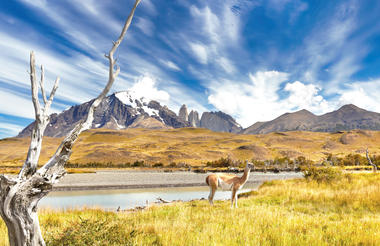
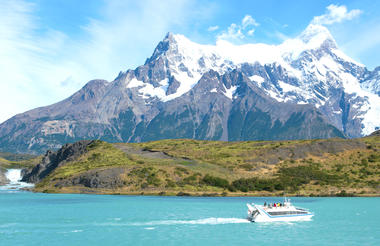
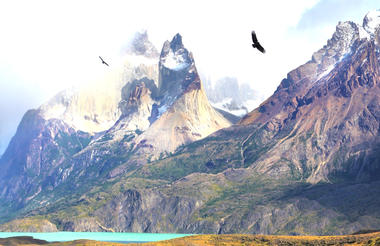
Widely regarded world’s southernmost city, Ushuaia is a strikingly beautiful destination on the southern coastline of Tierra del Fuego Island, backed by mountains and facing onto Beagle channel. The city’s elegant commercial centre offers a variety of cultural and entertainment activities, while its natural location means that adventure enthusiasts are spoilt for choice, with kayaking, skiing, hiking and sailing all on offer. For a more serene excursion, boat cruises are a popular way to view the glacier off Ushuaia’s coast.
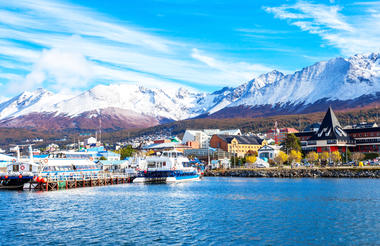
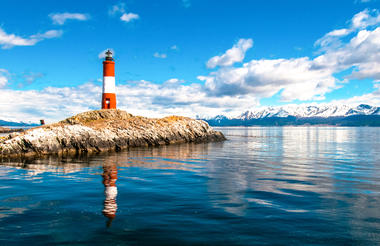

The world-famous Tierra del Fuego National Park is situated on the Argentine part of the island of Tierra del Fuego and was the first shoreline national park established in Argentina. The park is famous for its sublime views, fascinating history and unique environment. Featuring bright turquoise fjords, green forests close to the coast, and lush valleys created by parallel mountain ranges, the stunning scenery offers breathtaking views and extraordinary photographic opportunities, especially from the renowned lookout point at Lapataia Bay. History enthusiasts can see the ‘concheros’, circles where mollusks accumulated, showing that there were ancient yamanas aboriginal tribes living in the area hundreds of years ago (their main food was seafood). The remarkable Canadian Beavers can be seen from a distance along with their incredible dam systems, which have played a significant role in the environment.



Set at the southern tip of South America, Tierra del Fuego Province is a scenic province in the southernmost reaches of Argentina. Said to be one of the world’s final frontiers, this region boasts breathtaking scenery, incredible wildlife and rich cultural heritage. This corner of Patagonia provides endless activities and attractions for thrill-seekers and nature lovers. It boasts an array of natural wonders including ancient glaciers, untouched wilderness, national parks, pristine lakes, rivers and waterways. Don’t miss a visit to Ushuaia, the city set at the ‘end of the world’, which serves as the jumping-off point for expeditions to the Antarctic.








